First prototype:
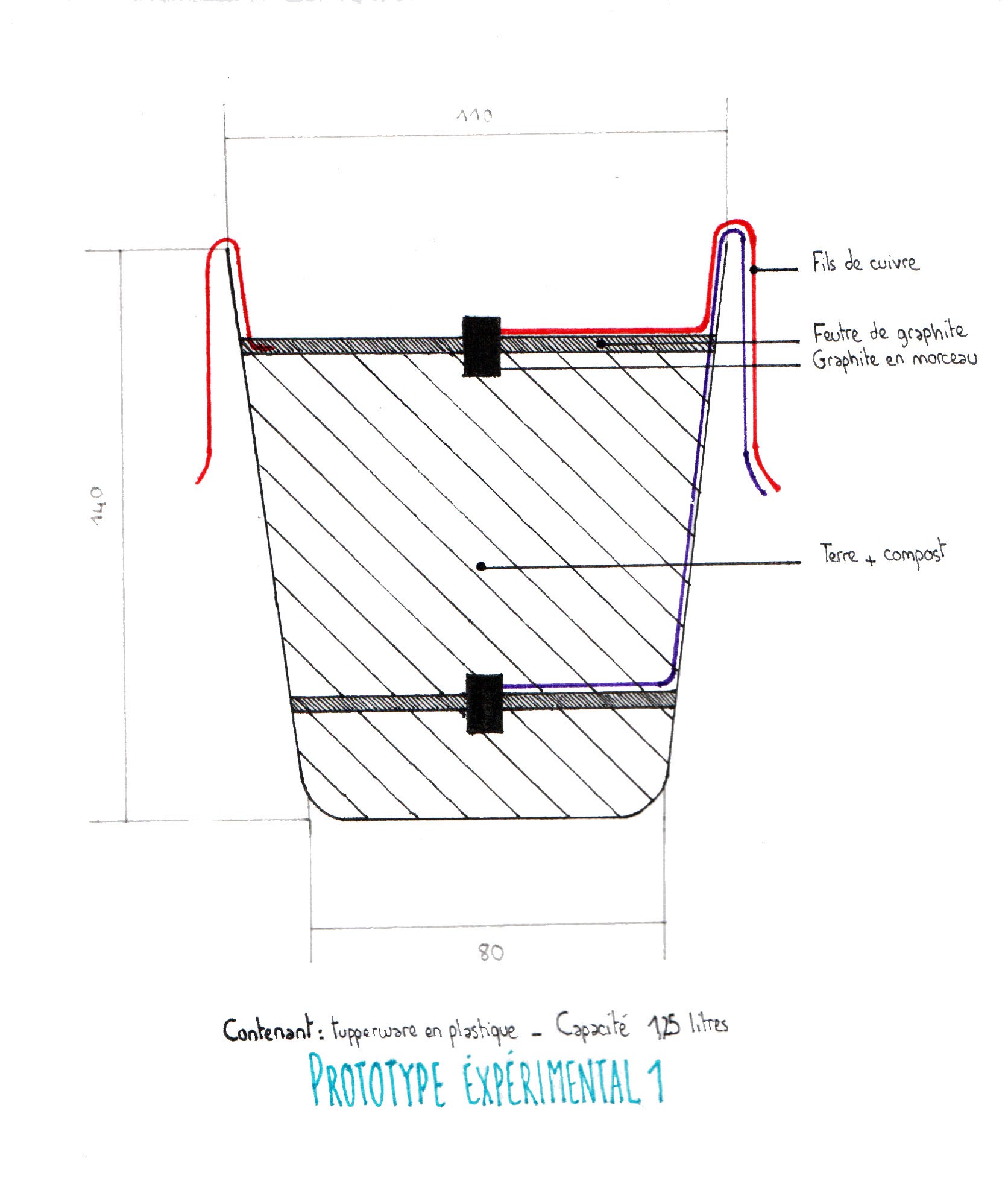
Anode: graphite felt, 5mm thick 80x80 mm
Cathode: graphite felt, 5 mm thick 110x110 mm

For both Anode and cathode, connections are made with a carbon block stuck into a slot in the graphite felt. The carbon blocks come from a washing machine motor and measured approximately 15x5x5 mm.
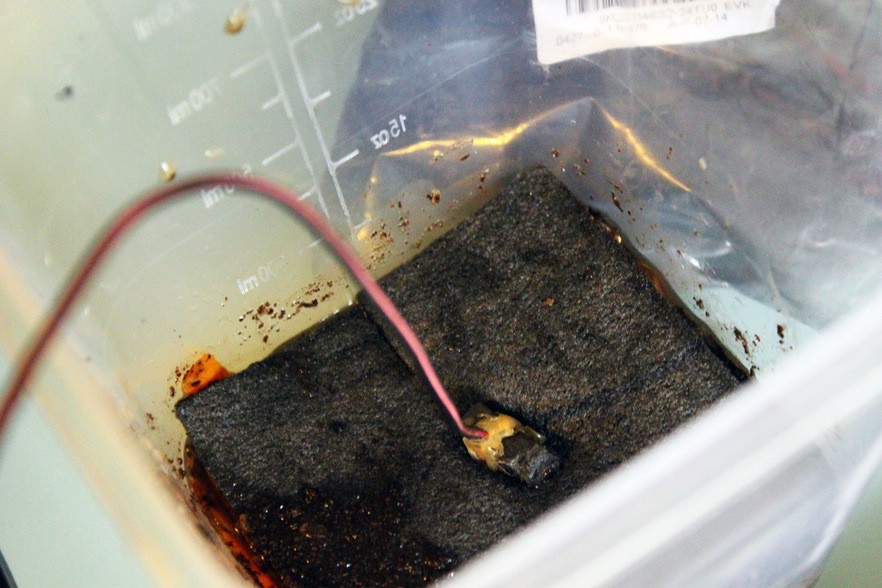
The wires (copper) were connected to the carbon blocks by wrapping them around the blocks. We, then, surrounded the wires with thermo-glue to isolate them from the fuel cell and avoid any side reactions.
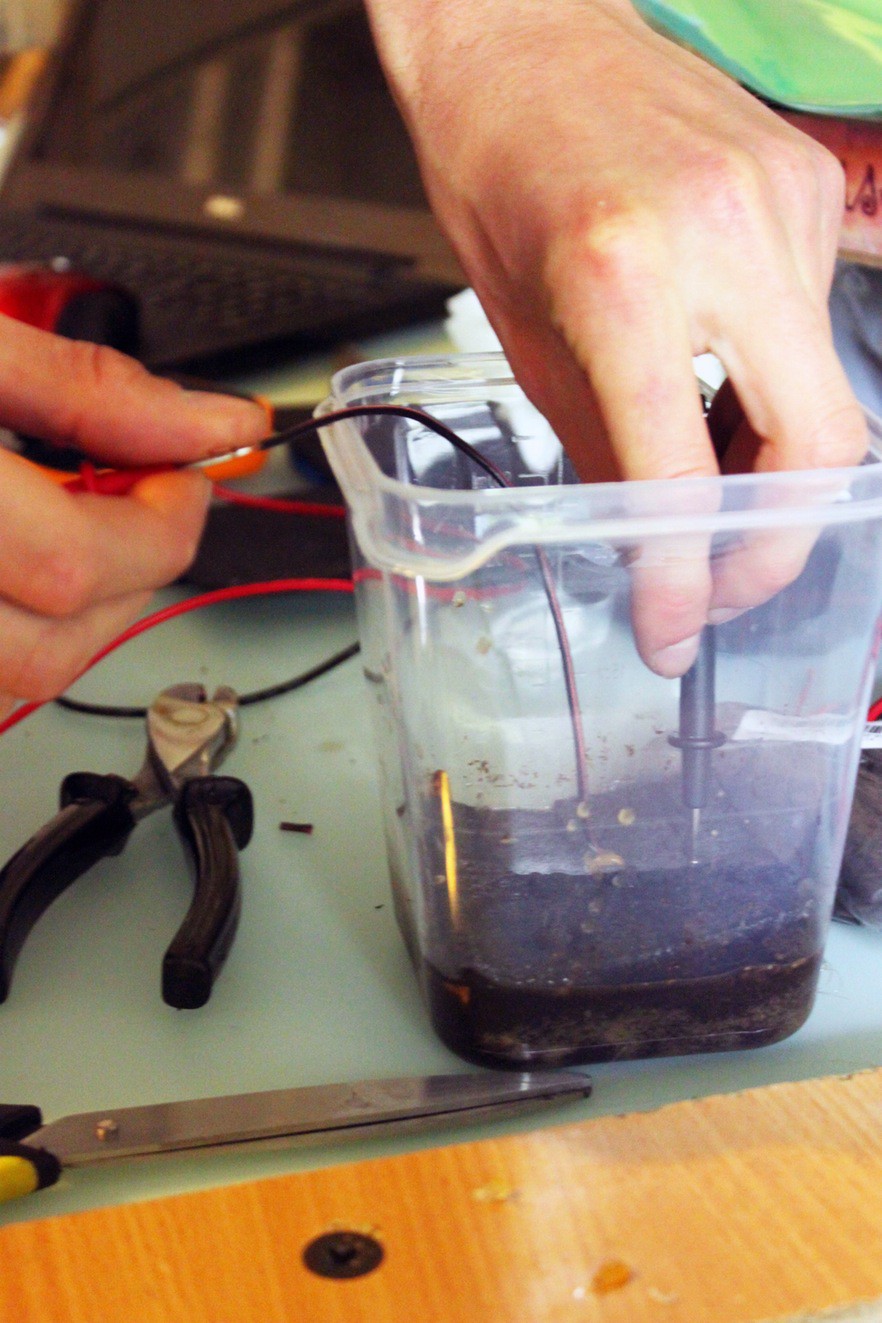
To test the influence of side reaction on the measures, we connected a second wire (copper) to the cathode, by directly stuffing it into the graphite felt, without any isolation.
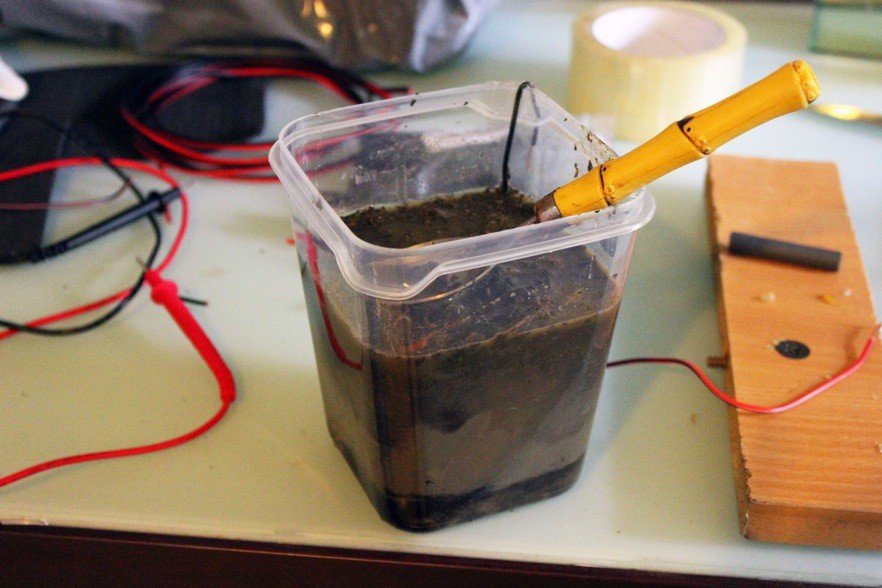
The soil is composed of earth from the garden, coffee grounds and vegetable peel from the compost.
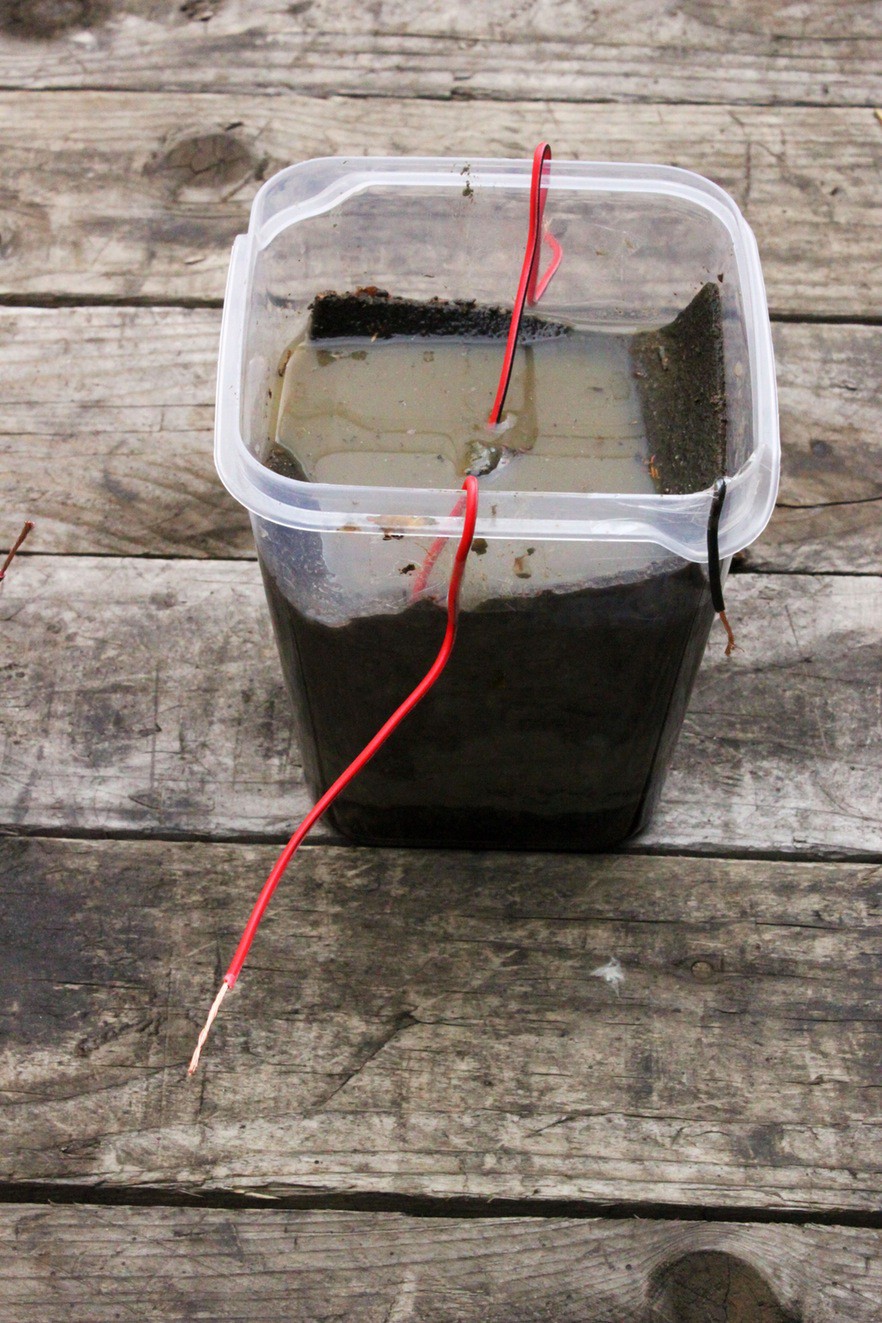
The first measures show similar results for both connection method: around 200 mV (with open circuit)
Second prototype: Mint Fuel Cell
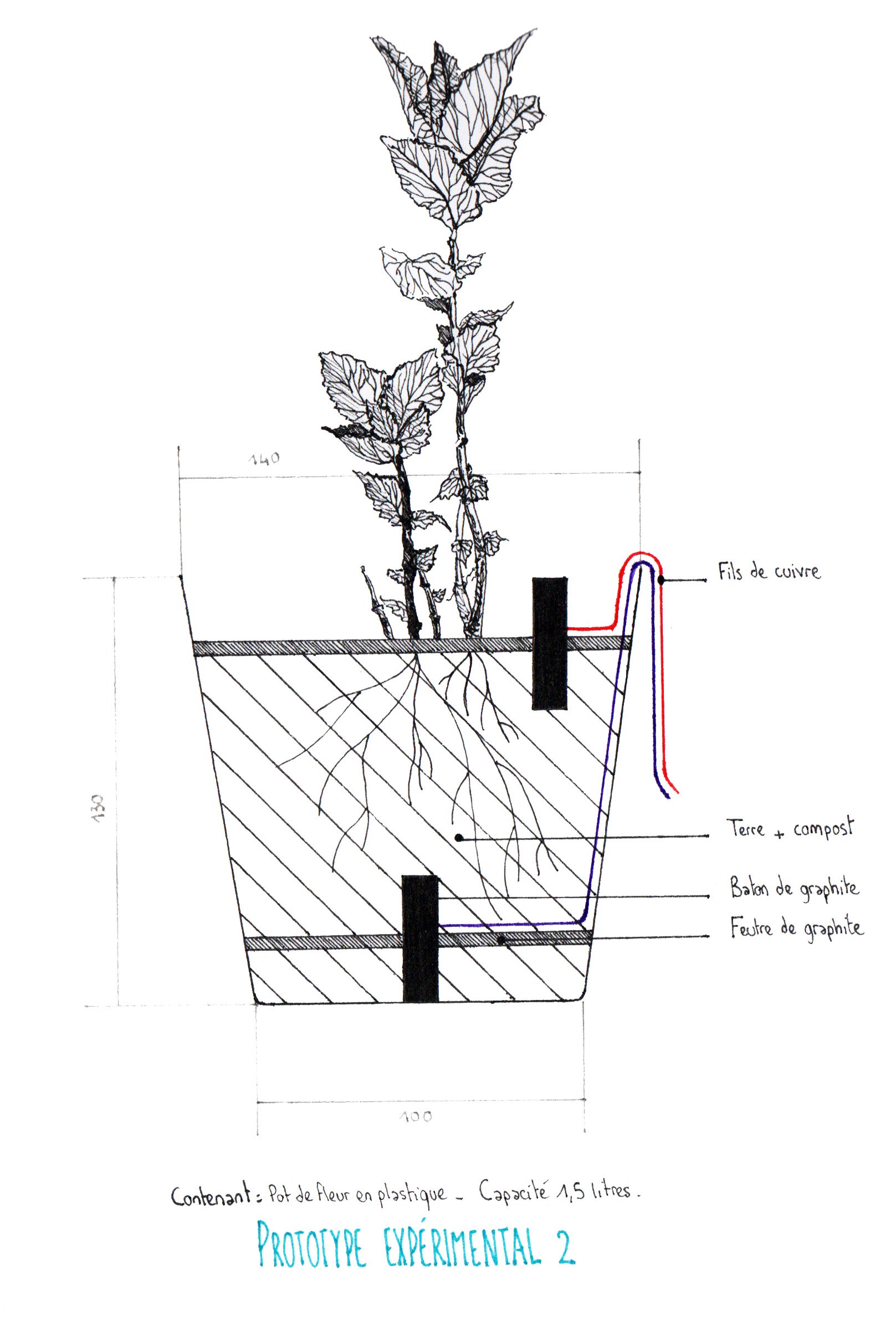
Anode: graphite felt, 5mm thick, diam 95 mm,
Cathode: graphite felt, 5 mm thick, inner diam 35 mm, outer diam 120mm
Electrical wires (copper, same kind as for proto 1) are wrapped around graphite sticks (50mm long, 8mm diam) and covered with thermo-glue. We then fixed the graphite sticks to the graphite felt by sticking them into a slot made in the felt. The connection method is the same as for proto 1, except that we are using graphite sticks instead of old carbon electrode.
The soil is composed of earth from the garden, and fresh compost, like proto 1. We added a little mint plant to our fuel cell to see if the plant could survive in our fuel cell.

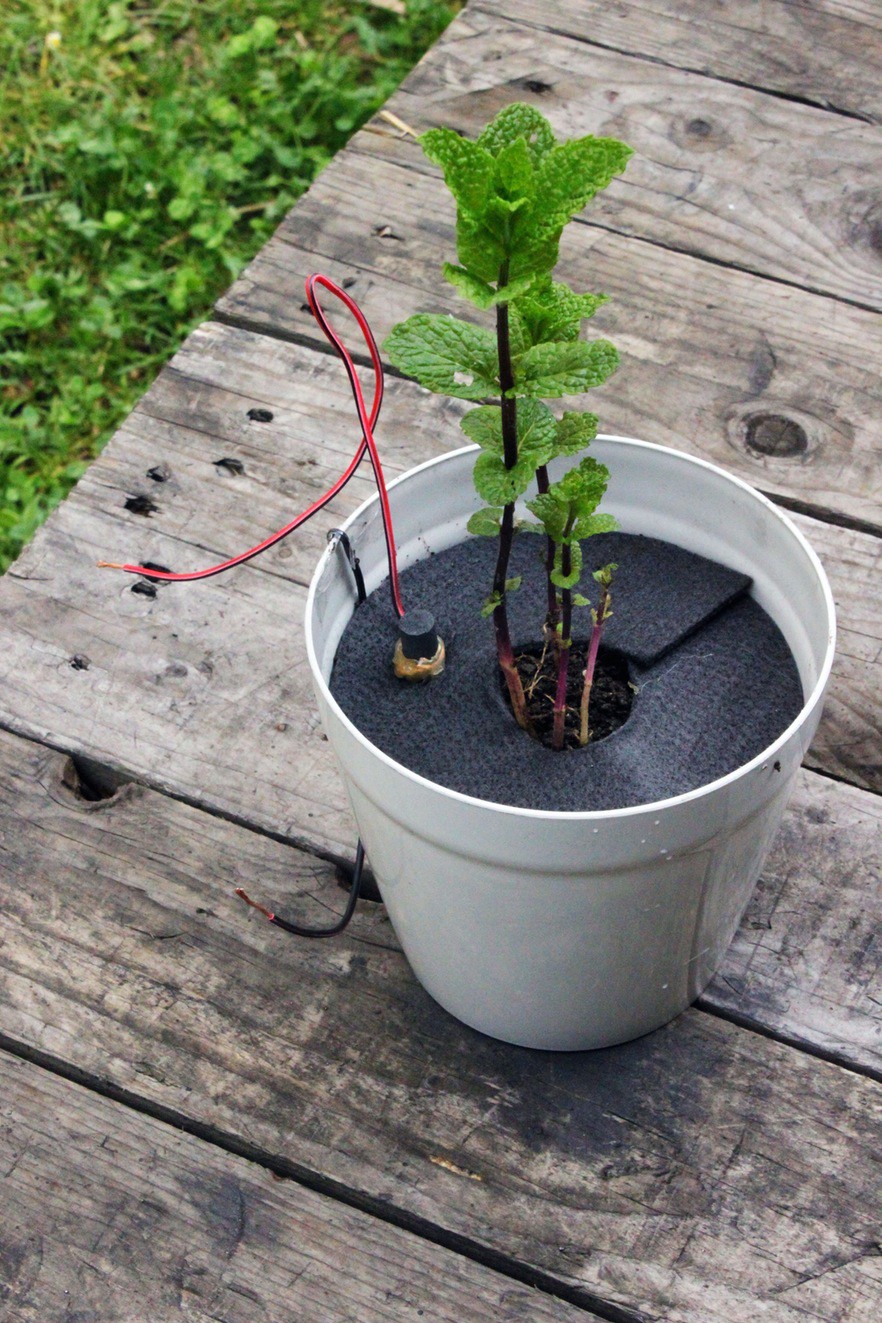
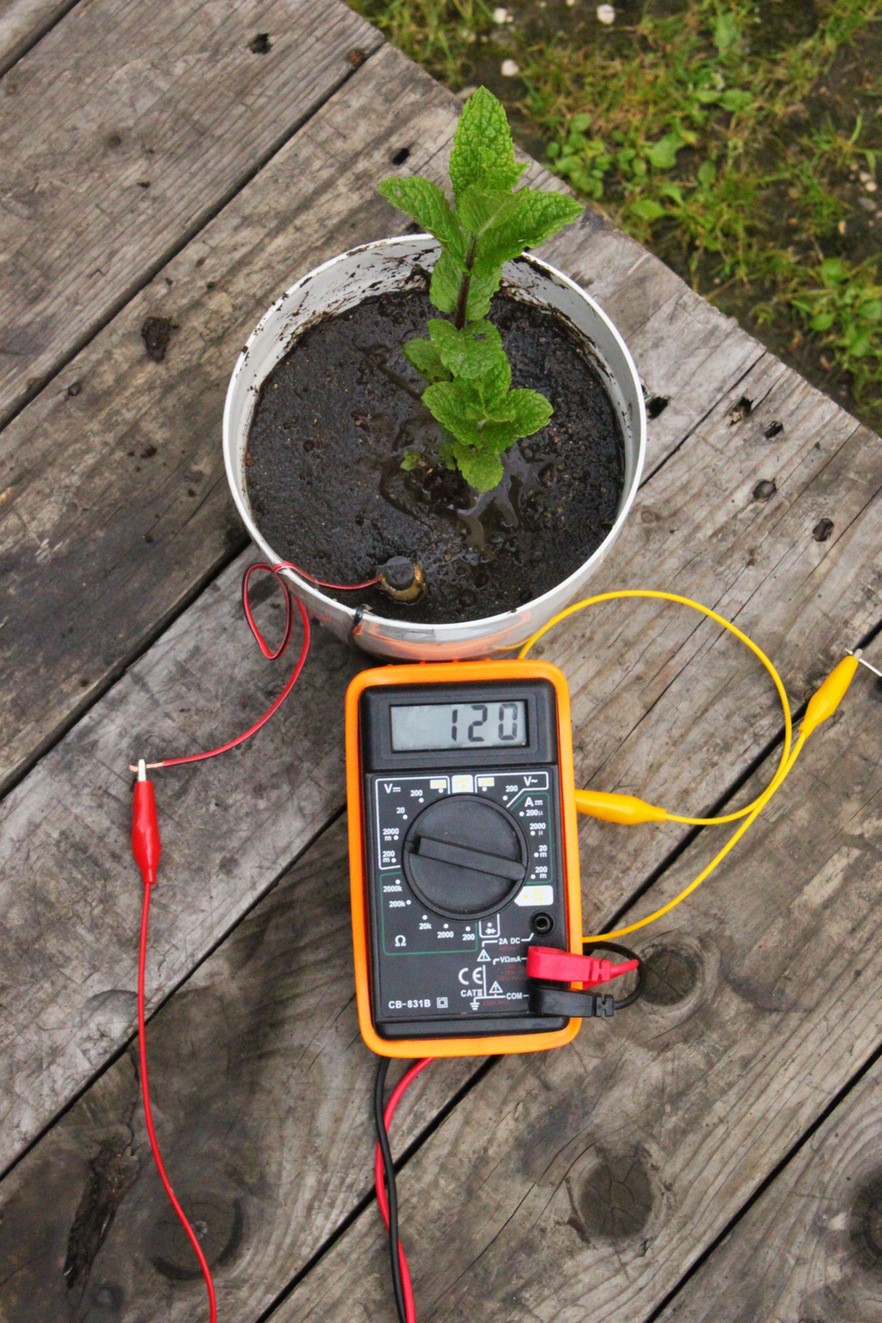
Polarization curve:
For the
mint MFC, we have the following polarization curve:
| Current (uA) | Tension (mV) | Power (uW) | Req (ohm) |
| 0 | 70 | 0 | |
| 9 | 66 | 0,594 | 7333,333 |
| 28 | 54 | 1,512 | 1928,571 |
| 33 | 47 | 1,551 | 1424,242 |
| 49 | 40 | 1,96 | 816,3265 |
| 58 | 30 | 1,74 | 517,2414 |
| 65 | 26 | 1,69 | 400 |
| 79 | 17 | 1,343 | 215,1899 |
| 86 | 11 | 0,946 | 127,907 |
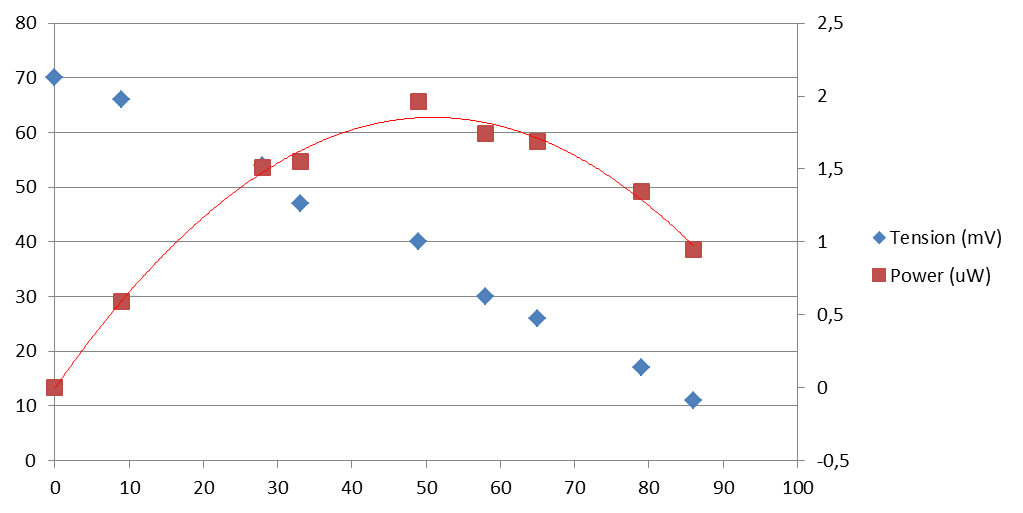
Furthermore, we observed, on both
prototypes, that the open circuit tension decreases quickly when we measure it. It
seems that the fuel cell discharge when we connect a voltmeter. To be able to
compare the results, we decided to measure most of the voltages across a 1 k
resistor.
Discussions
Become a Hackaday.io Member
Create an account to leave a comment. Already have an account? Log In.